SURE 2019
Students conduct professional research with faculty
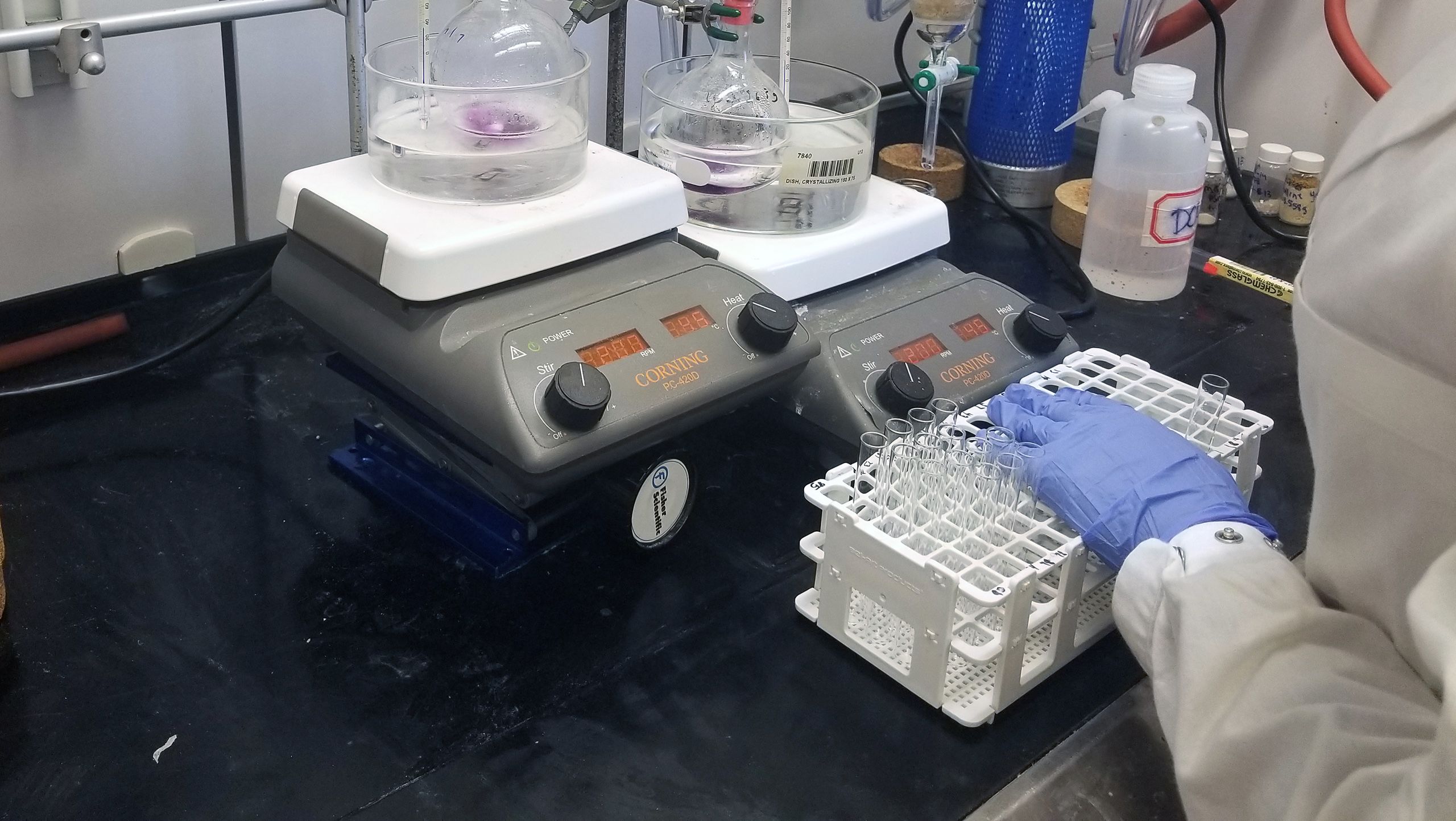
After spending 10 weeks tackling professional research projects with faculty mentors this summer, three Oxford students presented their research at the fall Southeastern Regional Meeting of the American Chemical Society in Savannah, Ga.
In addition to presenting their research at the conference, the trio also joined their three fellow student researchers in August end-of-session gatherings at the Oxford Science Building and on the Atlanta campus to showcase their results.
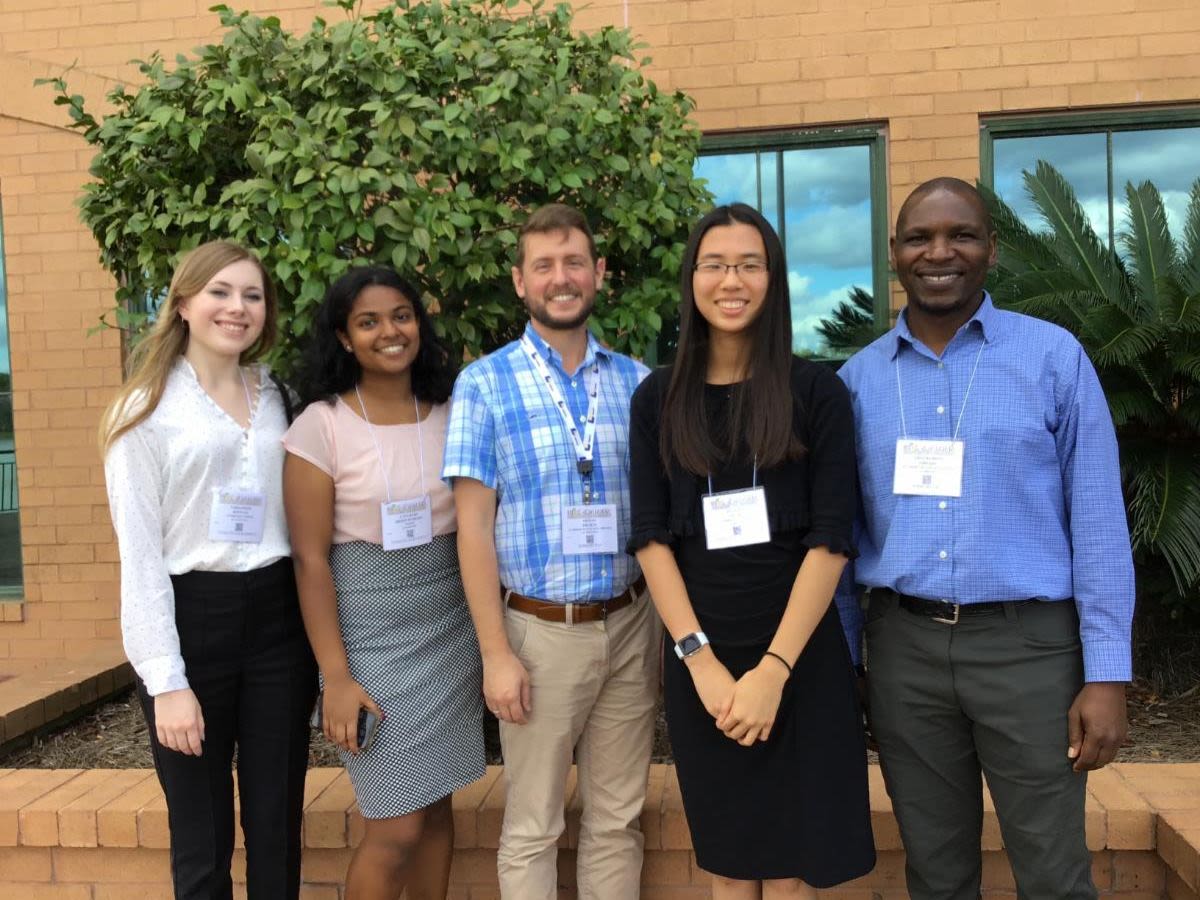
Maggie Gunter, Sharanya Thodupunoori, and Tiffany Hung (l-r) presented their research with Oxford faculty Austin Scharf (center) and Simbarashe Nkomo (far right) at the fall Southeastern Regional Meeting of the American Chemical Society.
Maggie Gunter, Sharanya Thodupunoori, and Tiffany Hung (l-r) presented their research with Oxford faculty Austin Scharf (center) and Simbarashe Nkomo (far right) at the fall Southeastern Regional Meeting of the American Chemical Society.
The SURE-Oxford (Summer Undergraduate Research Experience) program paired these six students with faculty members who oversaw their work and mentored them in the methods and operation of research.
Front Row (l-r): Maggie Gunter, Sharanya Thodupunoori, Tiffany Hung, Edward Zhi-Hua Yin, Camilla Kline, and Holly Cordray. Back row (l-r): Austin Scharf, Simbarashe Nkomo, Michael Martin, Melissa Hage, and Tasha Dobbin-Bennett.

SURE-Oxford, an extension of Emory University's SURE program, enabled students to conduct research in the areas of environmental science, biology, chemistry, and visual art.
The SURE-Oxford students participated in the larger SURE program on the Atlanta campus in weekly career mentoring and ethics sessions. Students learn leadership skills by taking ownership of a research project, working independently, and learning to communicate to a larger scientific community.
While students’ research projects typically highlight biological or biomedical emphases, SURE-program administrators wanted to expand to include other disciplines. To move toward this goal, this is the first year the program included a participant from the visual arts — Holly Cordray.
Cordray, a neuroscience and behavioral biology major on the pre-medicine track, worked with mentor Tasha Dobbin-Bennett, assistant professor of art history and studio art. Dobbin-Bennett also serves as co-director of the Mellon Grant for Humanities Pathways.
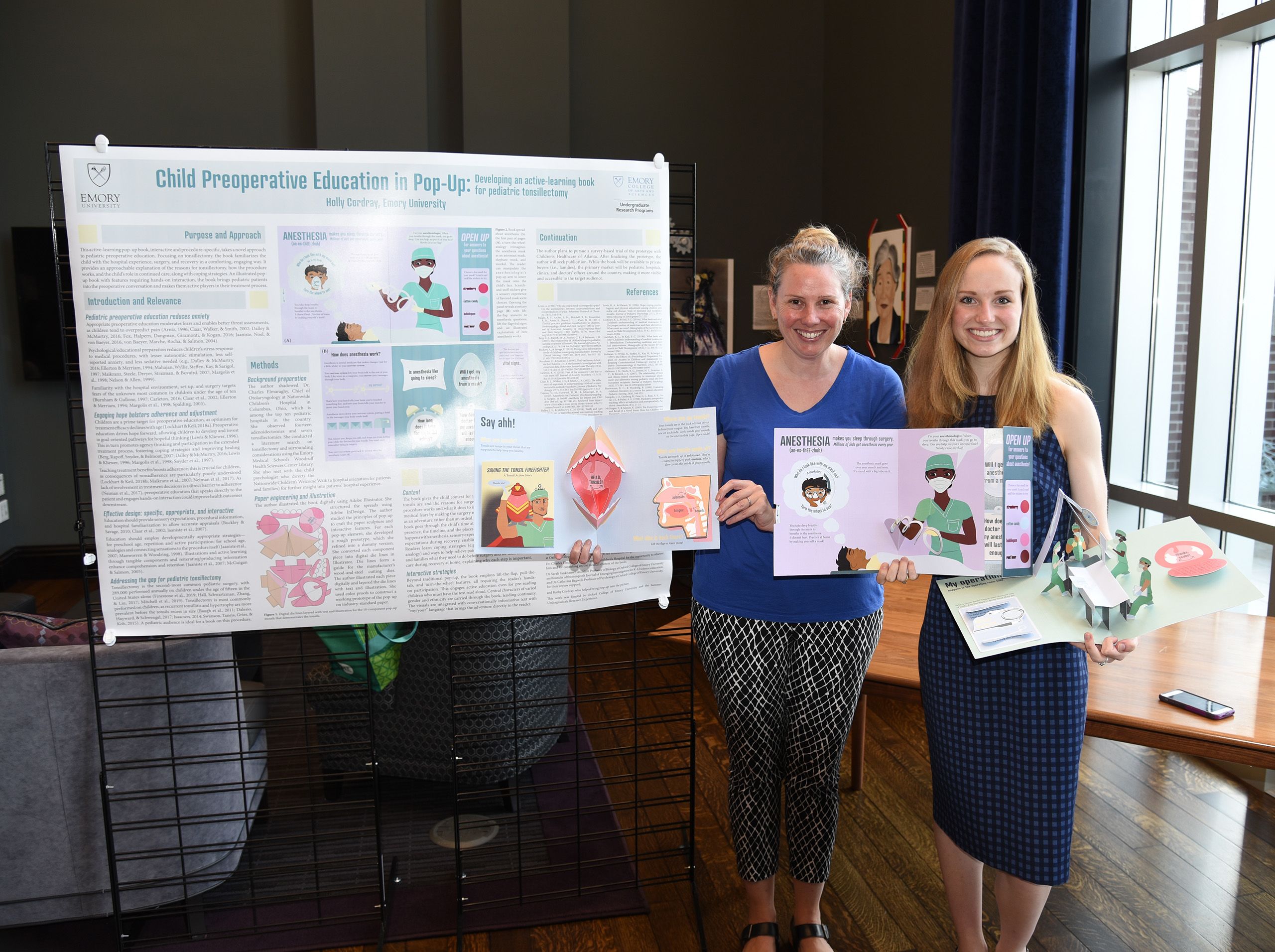
Now a junior at Emory College, Cordray did a display on developing an active learning pop-up book for children preparing for tonsillectomy. She plans on pursuing a medical specialty within pediatrics.
Cordray, who is from Grove City, Ohio, had an idea for a project that she believed could make a difference for pediatric surgical patients.
“I loved the opportunity to blend disciplines that excite me — pediatric healthcare, art, and creative writing — to do something I felt was worthwhile.”
— Student Holly Cordray
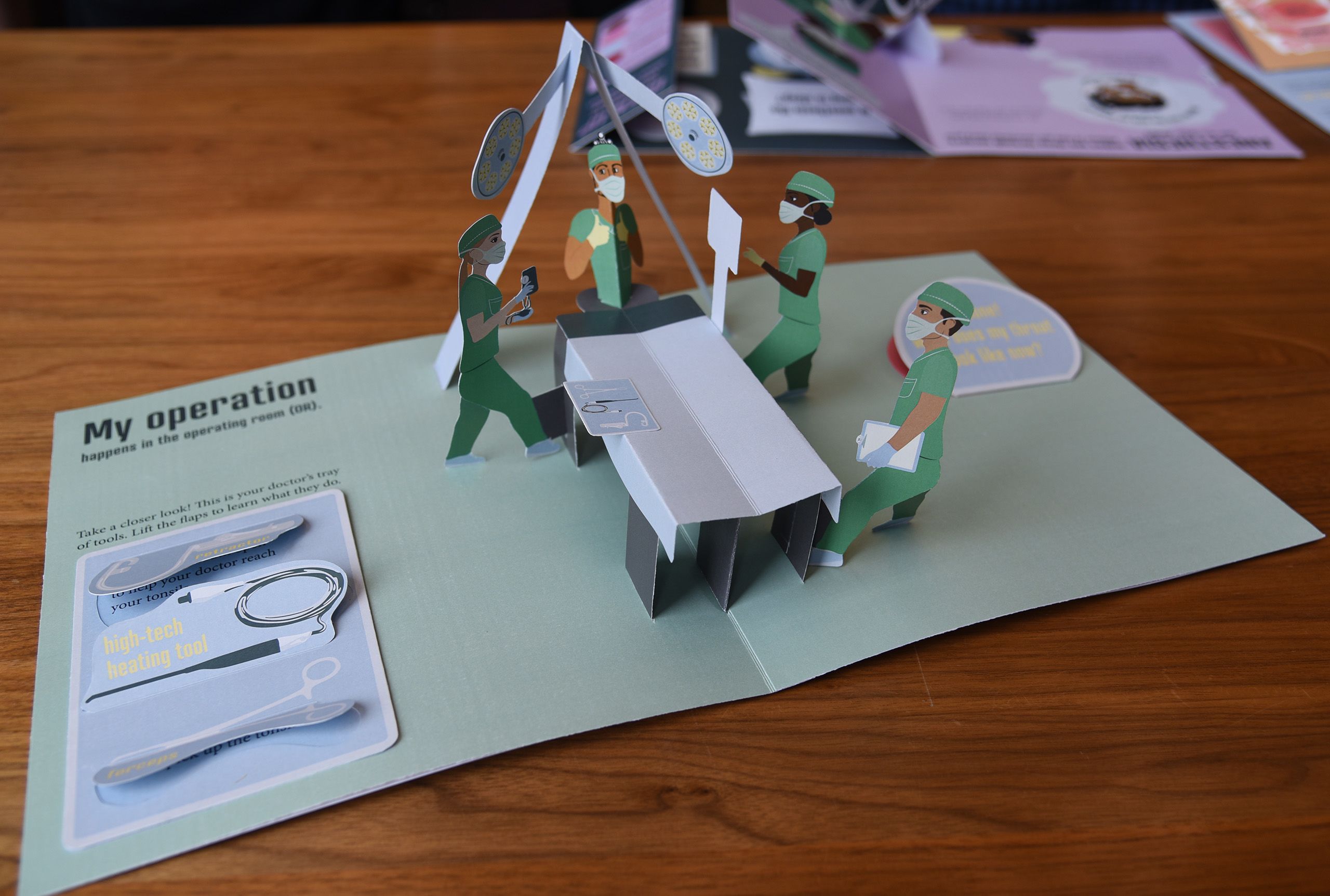
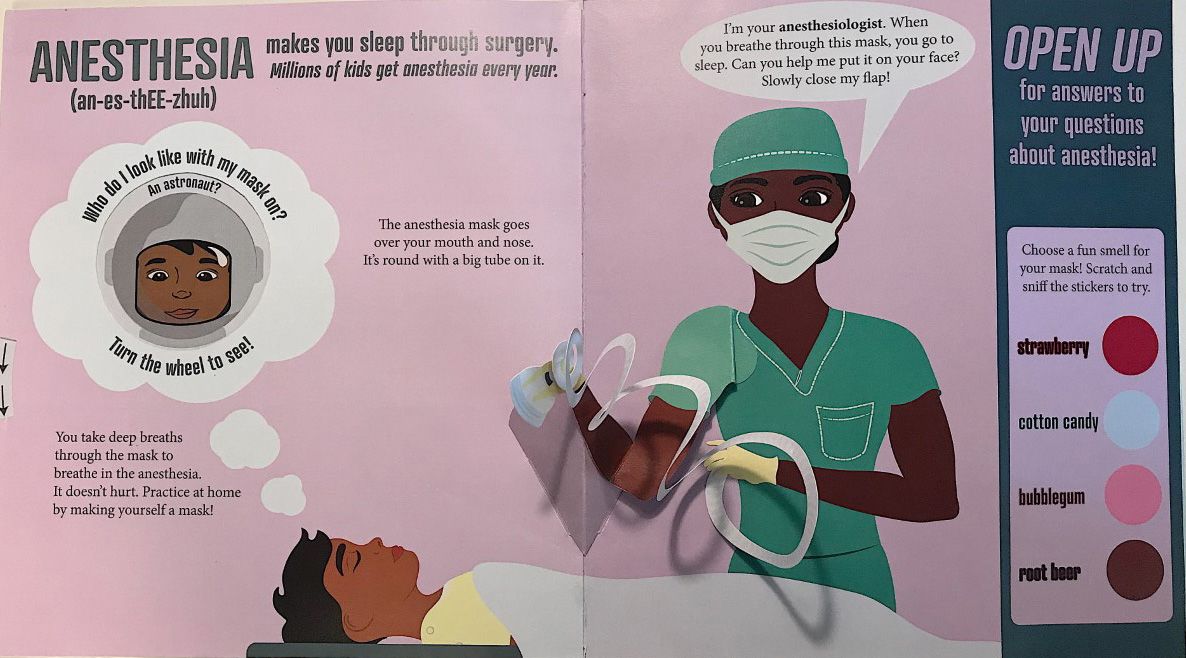
In her neuroscience and behavioral biology coursework during her second year at Oxford, Cordray researched the value of pediatric preoperative education in reducing anxiety and improving health outcomes.
“I saw pop-up as the right fit for pediatric patients because it would engage the reader, and even pre-readers, in hands-on learning that would be accessible, memorable, and fun.”
She is seeking publication for her book in hopes that it will help some of the 300,000 children undergoing tonsillectomy each year in the United States.
Cordray taught herself the new techniques she needed to carry out her project, including using digital design software to illustrate the book. “I hadn’t done pop-up before, and I found that it was much like coming up with a 3D jigsaw puzzle from scratch.”
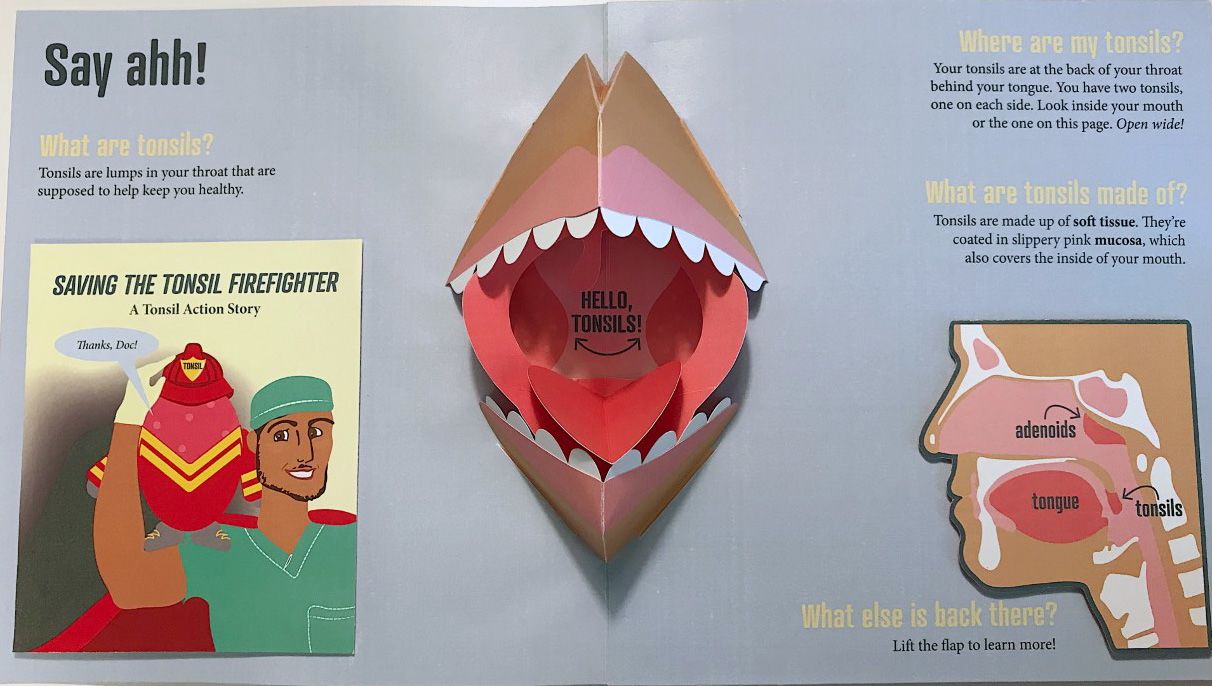
Maggie Gunter, who is also a neuroscience and behavioral biology major, wanted to enhance her inorganic chemistry knowledge and work with one of her favorite professors — Austin Scharf.
Gunter, now a junior at Emory College, had worked as a Supplemental Instructor (similar to a Teaching Assistant) for her sophomore year with Scharf, assistant professor of chemistry.
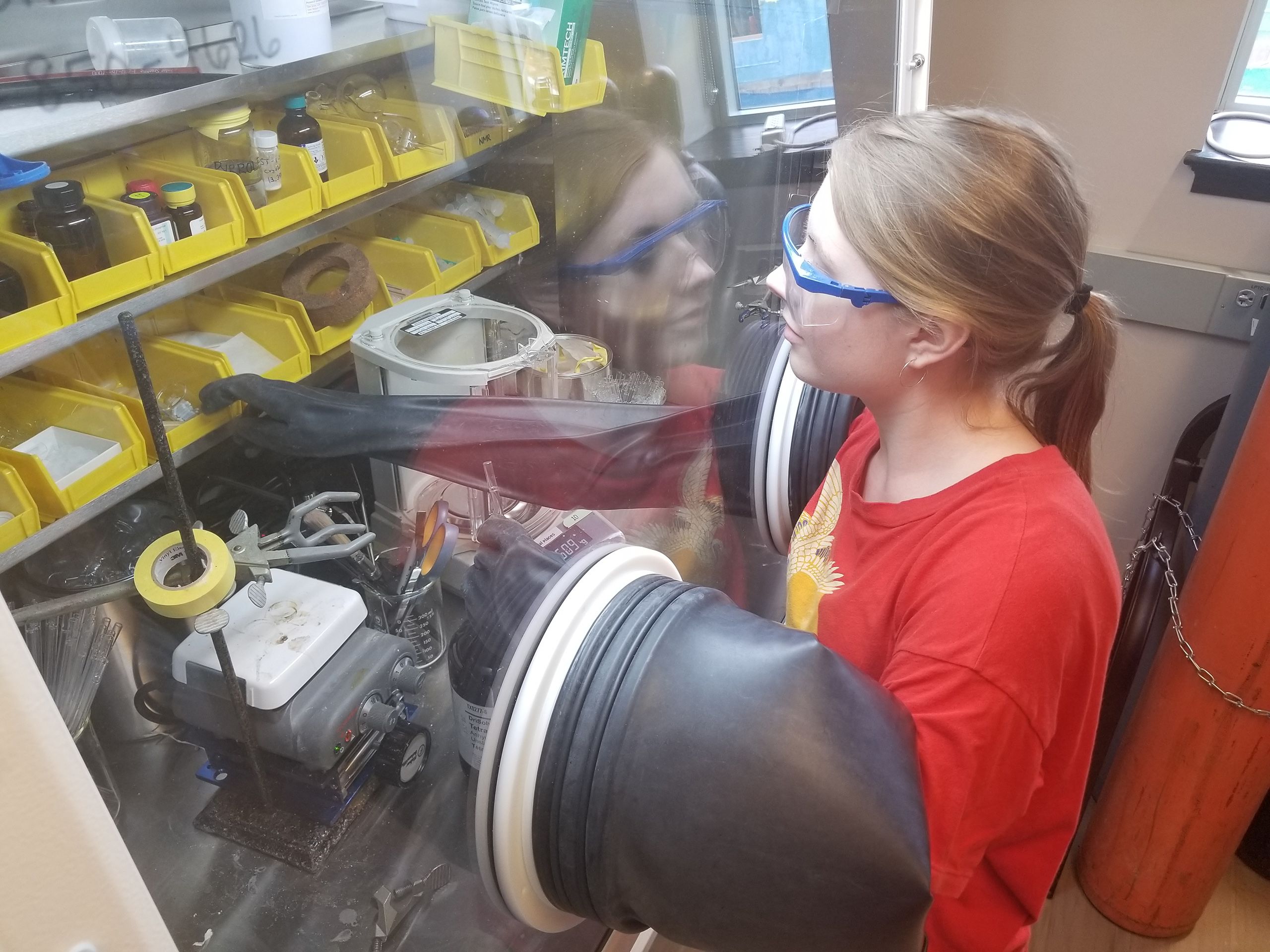
Scharf also oversaw the research of Sharanya Thodupunoori, now a second-year student from Dayton, N.J. The trio worked on synthesizing molecules with two properties that aren’t usually found together — magnetism and luminescence. They were trying to make magnetic molecules that glow.
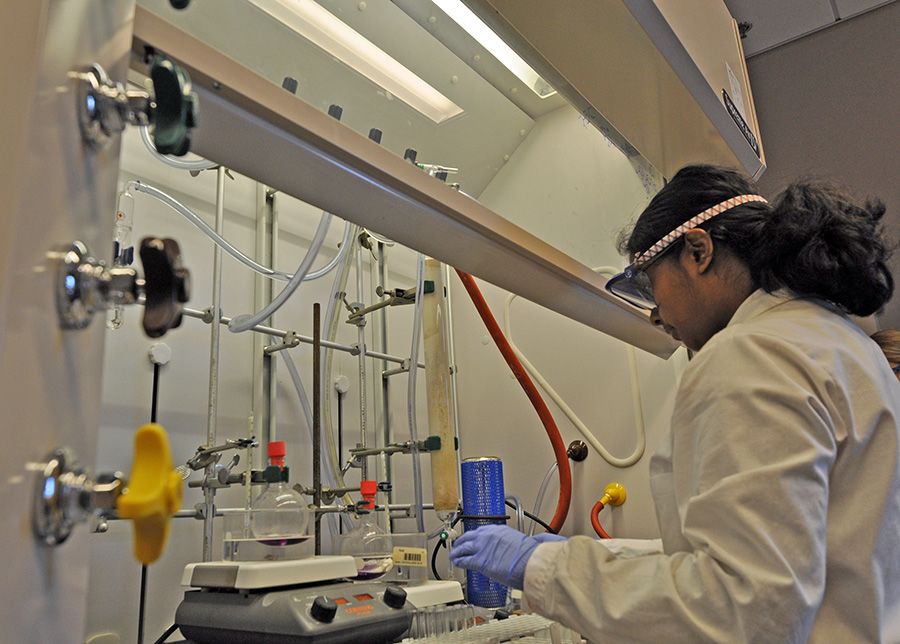

“My research gave me unique hands-on experience with a field of chemistry I had hardly encountered before.”
— Maggie Gunter, a student from St. Petersburg, Fla., who plans on attending medical school specializing in neurology
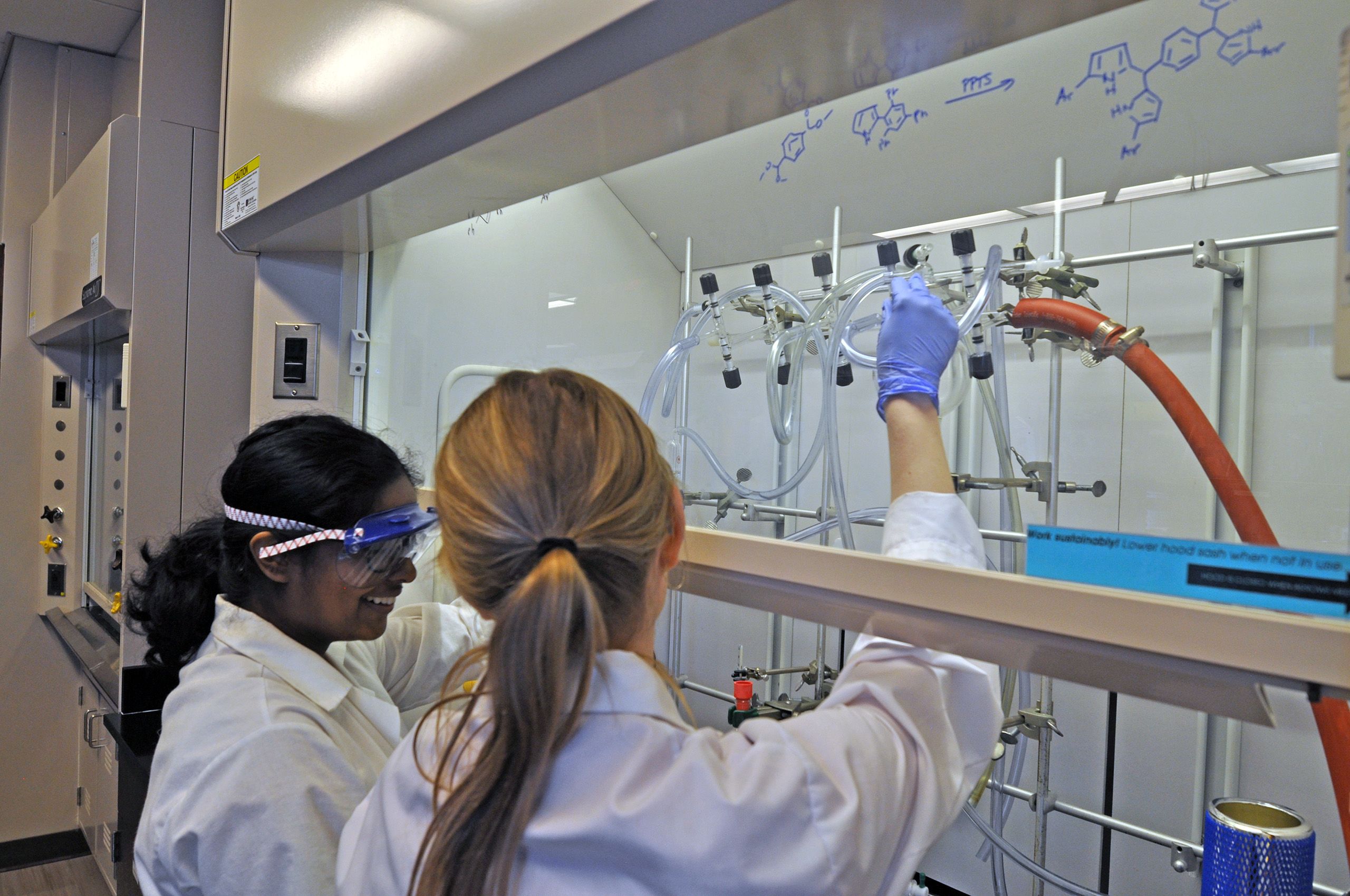
Gunter enjoyed experiencing a chemistry research lab and using brand new techniques. “Nearly all of the synthesis in this project was carried out independently by me and Sharanya so we were really encouraged to gain a number of new lab-related skills via practice.”
It was challenging to learn how to deal with failure and move past it, Gunter recalls.
“Many of our reactions failed on the first try and required many repeats, with some never proceeding correctly. It was discouraging at times, but research isn’t always a clean-cut pathway toward the final goal and often problems will arise that need to be overcome first.”
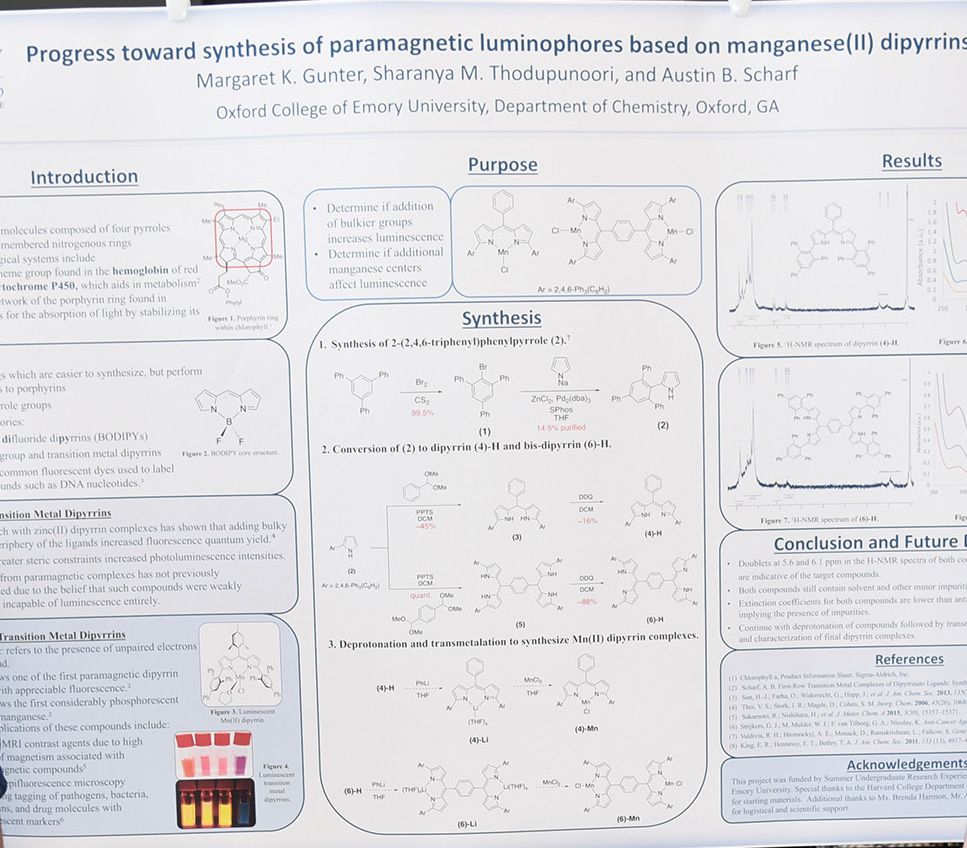
For Tiffany Hung, the most challenging part of her research was also learning how to manage and accept failure, troubleshooting, and adapting accordingly. When her microscope’s settings would unexpectedly reset or the reaction she anticipated wouldn’t display, she remained undeterred.
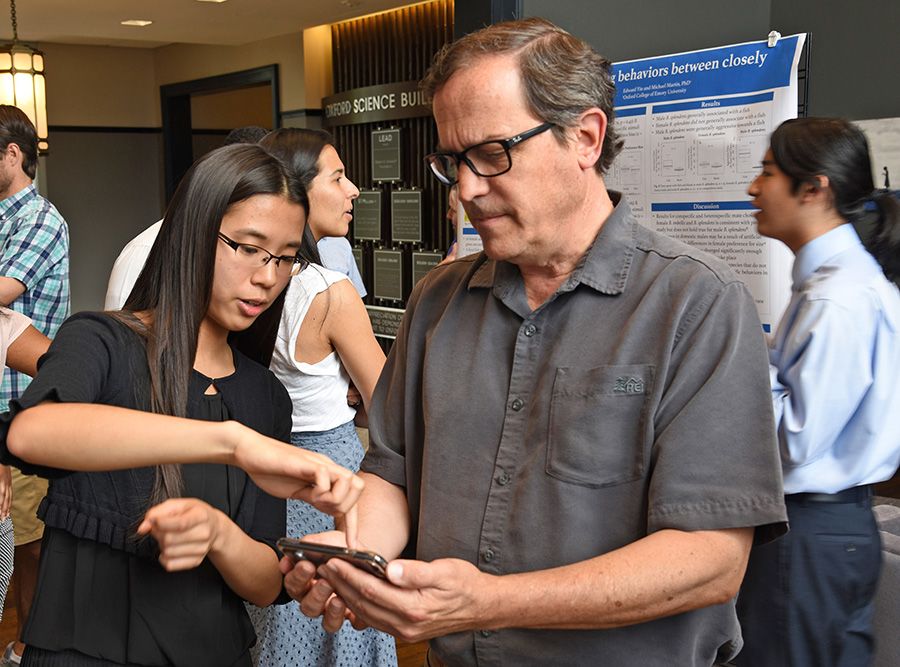
“Through these tough, uncomfortable, and often frustrating times, I have grown as a chemist and researcher and learned how to troubleshoot, be resilient, and not take failure personally.”
Hung worked with Simbarashe Nkomo, assistant professor of chemistry, who served as a SURE-Oxford mentor for the first time.
Their project focused on “Engineering complex patterns in small networks of coupled chemical oscillators.” A chemical oscillator is a complex mixture of reacting chemical species where one or more components exhibit periodic concentration changes. They connected the oscillators to form a network of oscillators.
Hung has interests in chemistry and sociology, so the research topic overlaps her and Nkomo’s interests. Network studies can be applied to social networks, Nkomo explains. Watch the “spiral wave” video below to see the chemical oscillators in action.
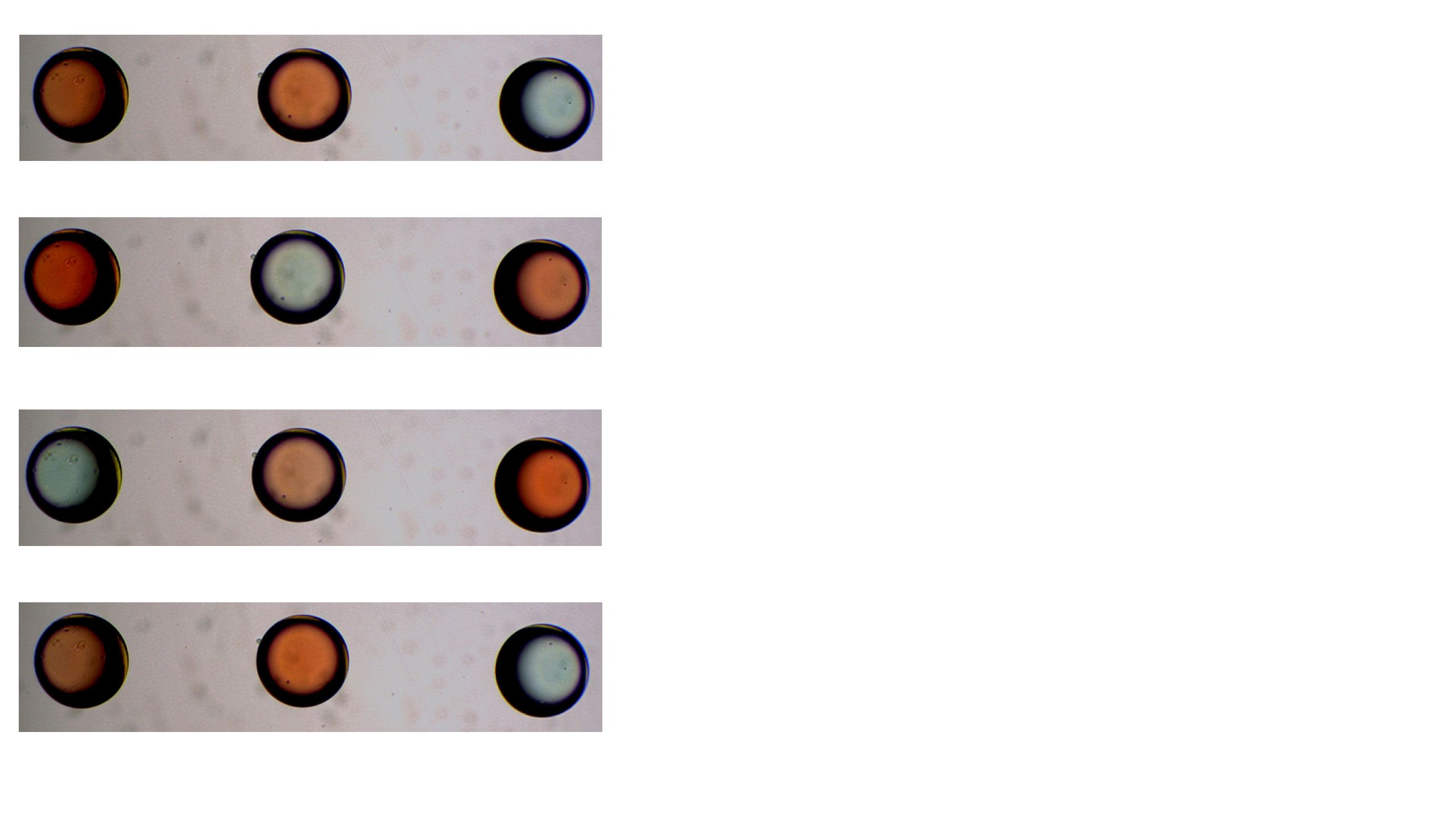
Hung became interested in doing college research after spending the summer of her junior year in high school at a local university’s chemistry lab. The experience made her want to explore subfields of chemistry.
“SURE-Oxford was the perfect opportunity to do just that as it facilitates my desire to learn through self-discovery.”
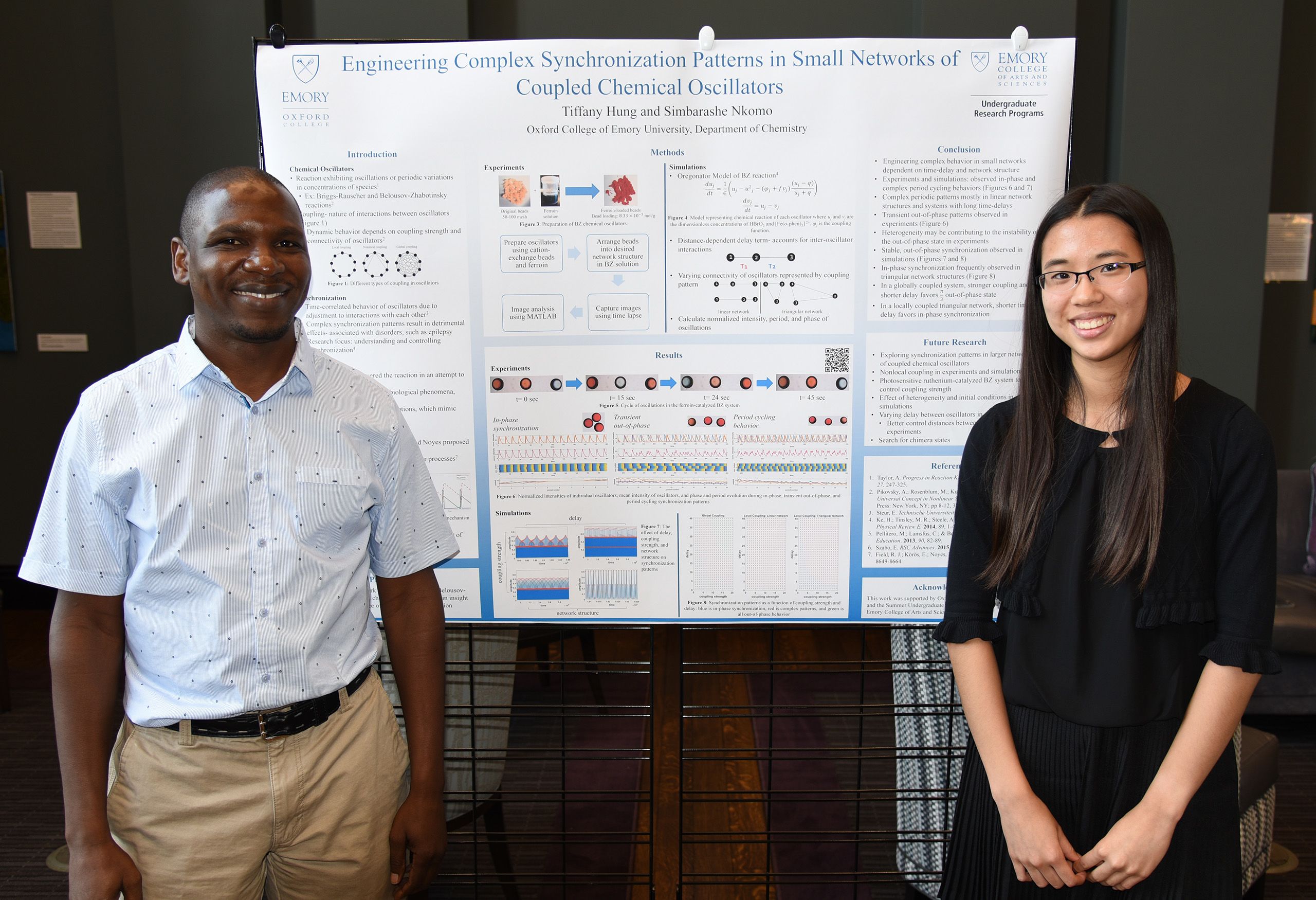

“Students learn more about being a scientist and ownership of the work. They build their confidence to work independently in lab and to present their work.”
The program allowed Hung to experience the whole research process, from writing a proposal and conducting a literature search to writing up her findings in a poster and presenting at symposiums.
She also enjoyed learning about research projects on the Atlanta campus. It helped her envision possible research projects she could work on when she continues to Emory College of Arts and Sciences next fall.
By summer’s end, Hung accomplished her project goals and used information gained during her research to continue the project during the school year.
She valued being able to completely focus her time and energy on research without having to worry about upcoming tests and assignments like she would have during the academic year.
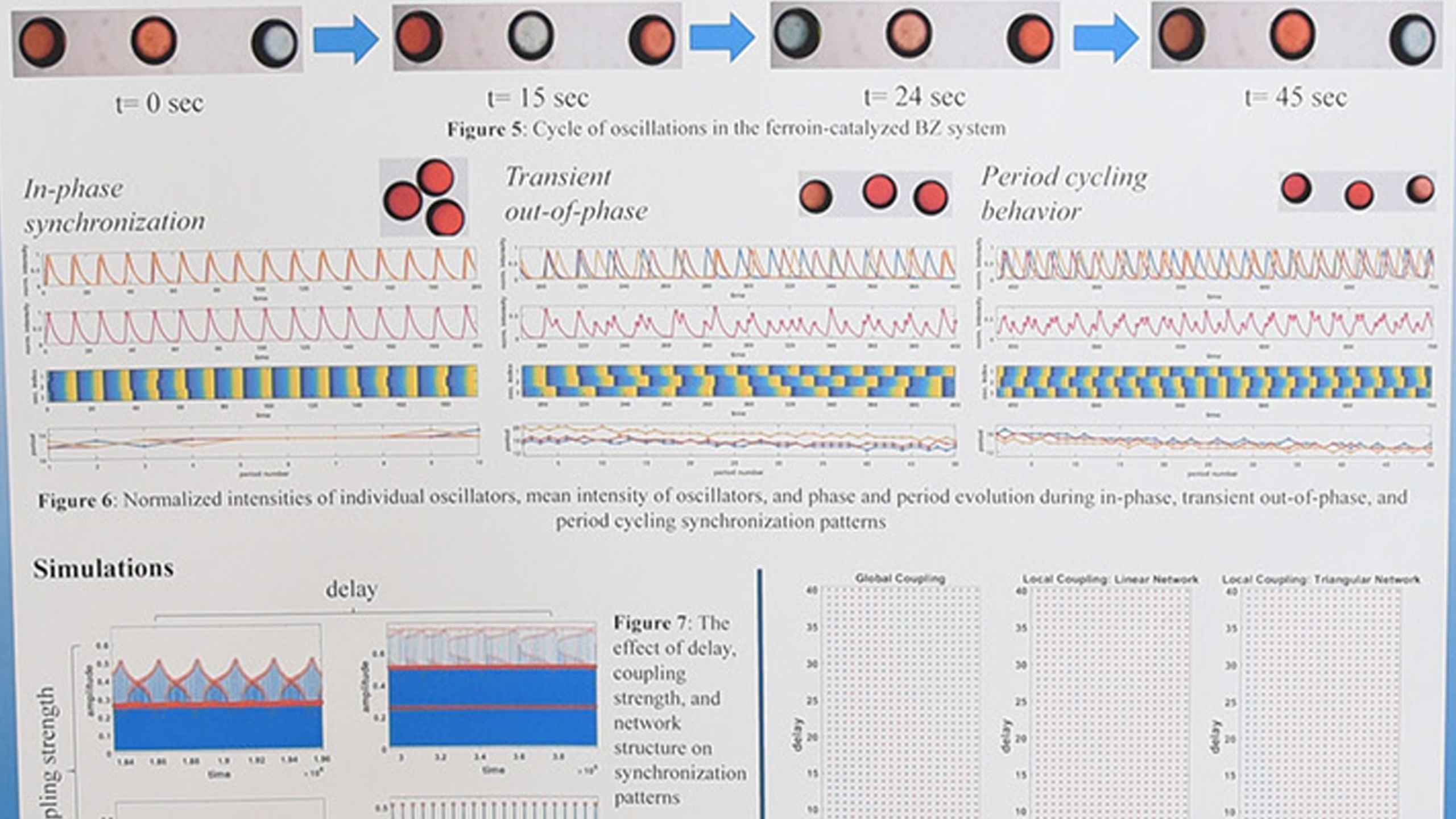
Austin Scharf, who spent his first summer as a tenure-track faculty member mentoring two SURE-Oxford students, agreed that the program allows students to do research without the distractions of classes, co-curriculars, or other on-campus jobs.
Scharf oversaw the work of Sharanya Thodupunoori and Maggie Gunter trying to make magnetic molecules that glow. If his research team could make glowing, magnetic molecules they might find uses as MRI contrast agents and fluorescence labels in cells or organisms.
They used infrared and nuclear magnetic resonance spectrometers and a brand new inert-atmosphere glovebox — a piece of equipment that allows researchers to conduct chemical reactions in the complete absence of oxygen and water.


Oxford’s commitment to experiential learning enables students to engage in numerous opportunities to conduct professional research in their first and second years of college. At the vast majority of schools, undergraduate research is supervised by graduate students or post-doctoral fellows, Scharf emphasizes.
“Oxford provides an amazing, very rare opportunity for early undergraduates to get a chance to conduct novel scientific research directly with faculty. At Oxford, we faculty get the chance to work directly with students, teaching them everything from basic laboratory techniques to advanced concepts in cutting-edge research."
The summer provided an opportunity for Scharf to spend lots of time with his research students daily .
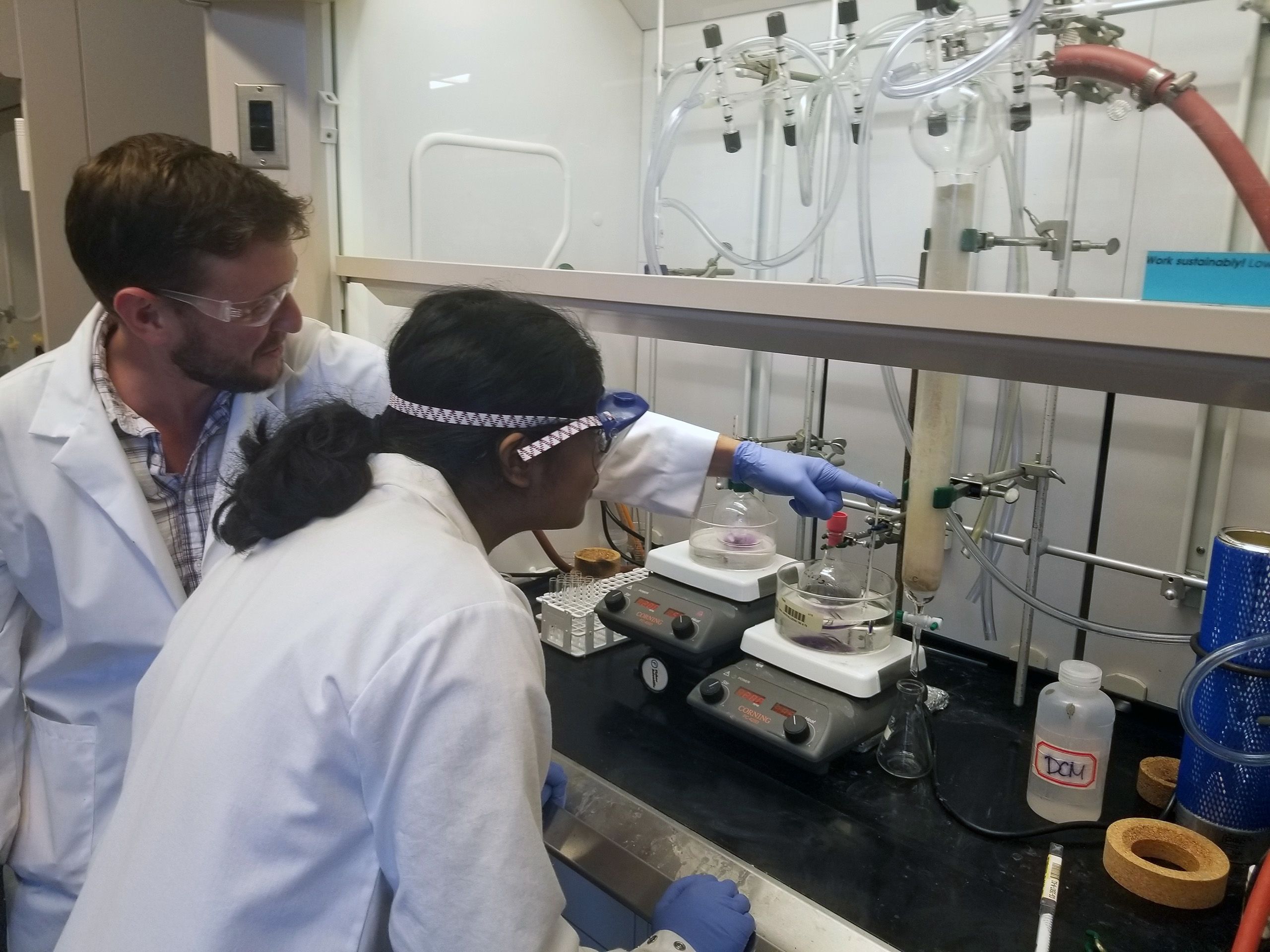
“In the 10-week summer session, the students learn a host of new skills, and I absolutely love seeing their confidence improve as they become familiar with the techniques they use regularly. They also really take ownership of their projects, and it’s gratifying to see students’ drive to get results.”
— Austin Scharf, assistant professor of chemistry
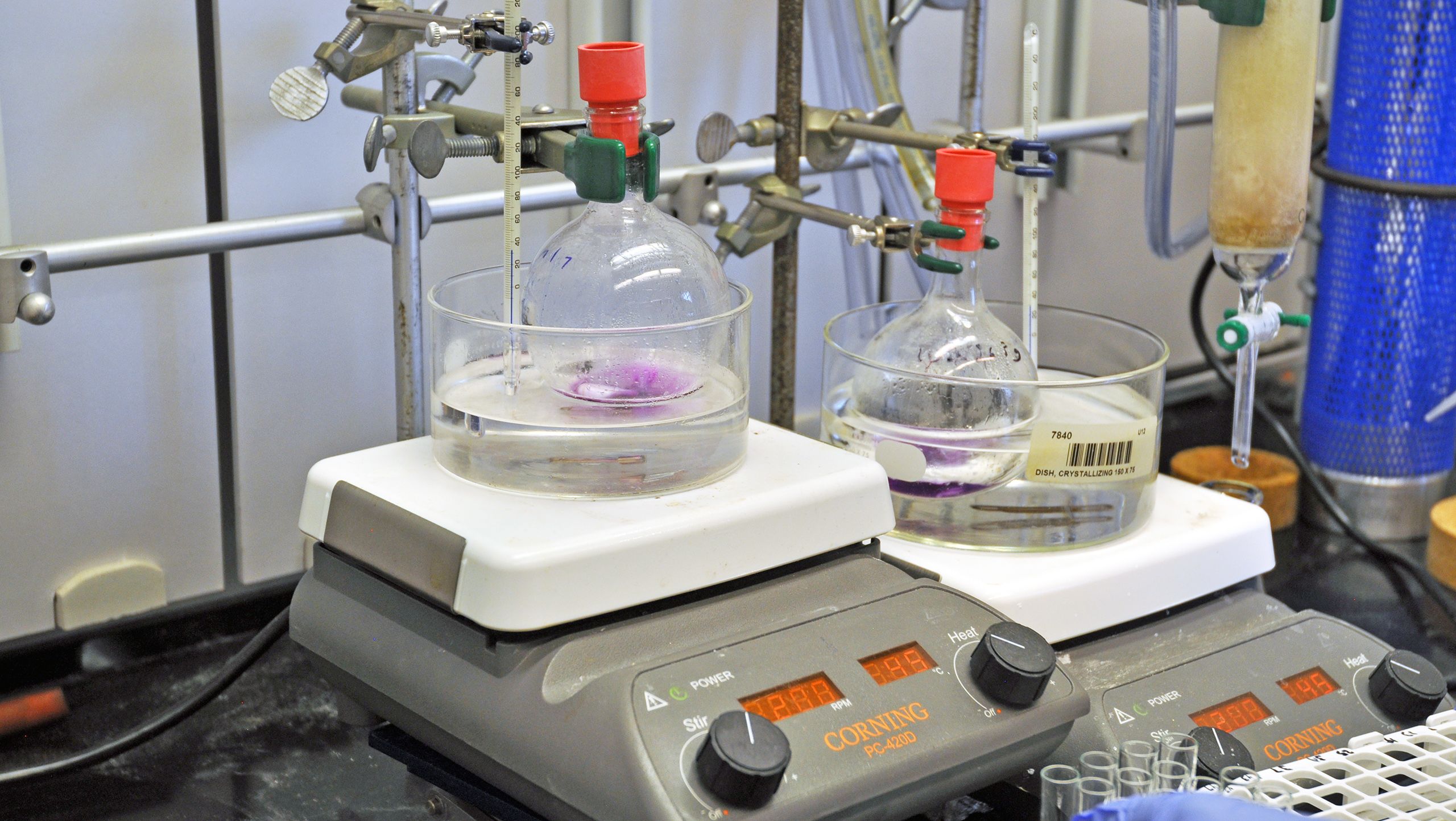
Melissa Hage, assistant professor of environmental science, also enjoyed seeing her student researcher take ownership of the project. Hage served as a SURE-Oxford mentor for the first time this summer to Camilla Kline, now a junior from Darien, Conn.
“She was the one making the decisions about how things should be done and she became more confident and comfortable doing so as the summer progressed. It was amazing to see how well she could explain everything she had worked on and why it was important at the SURE poster sessions.”
— Melissa Hage, assistant professor of environmental science
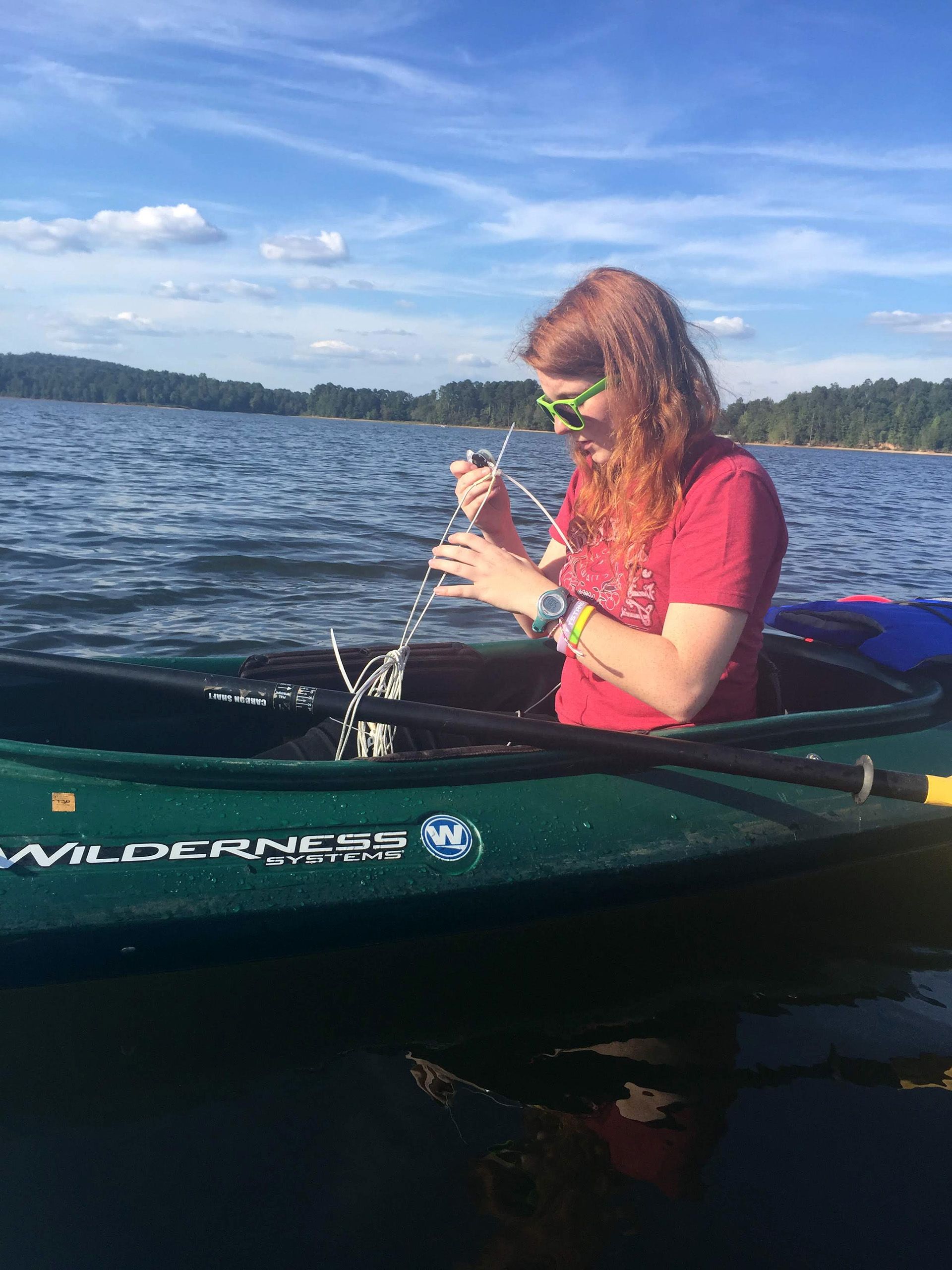
The duo mainly took water samples from two warm monomictic reservoirs (ones that never freeze) near the campus. Some reservoirs use solar-powered mixers to induce mixing in near-surface waters to limit degraded water quality from agricultural runoff.
They visited one new and without mixers (Hard Labor Creek Reservoir) and the other old and with mixers (Lake Varner Reservoir). They examined potential effects of induced mixing on the temperature, oxygen concentrations, and distribution of other essential elements.
Their fieldwork included heading out onto the lakes in kayaks. They also took some preliminary samples from the Oxford Organic Farm. Kline and Hage collected high-resolution temperature data at both reservoirs with sensors. They produced a heat map that shows water temperature at different depths over time. They also collected and analyzed water samples from various depths from both reservoirs.
Researchers need to conduct longitudinal monitoring of lakes throughout the year and for several years to better understand variations in water chemistry in response to climate variations. Part of their project’s goal was to establish the study locations and sampling methods to provide the baseline to compare later data.
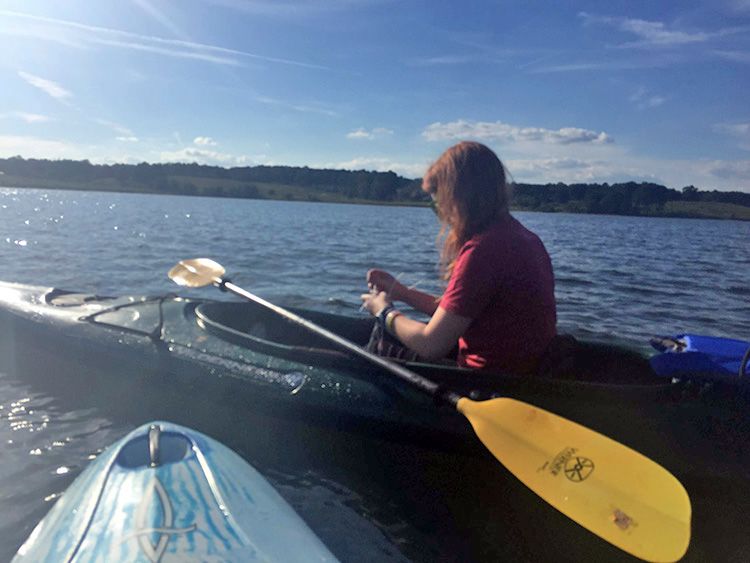
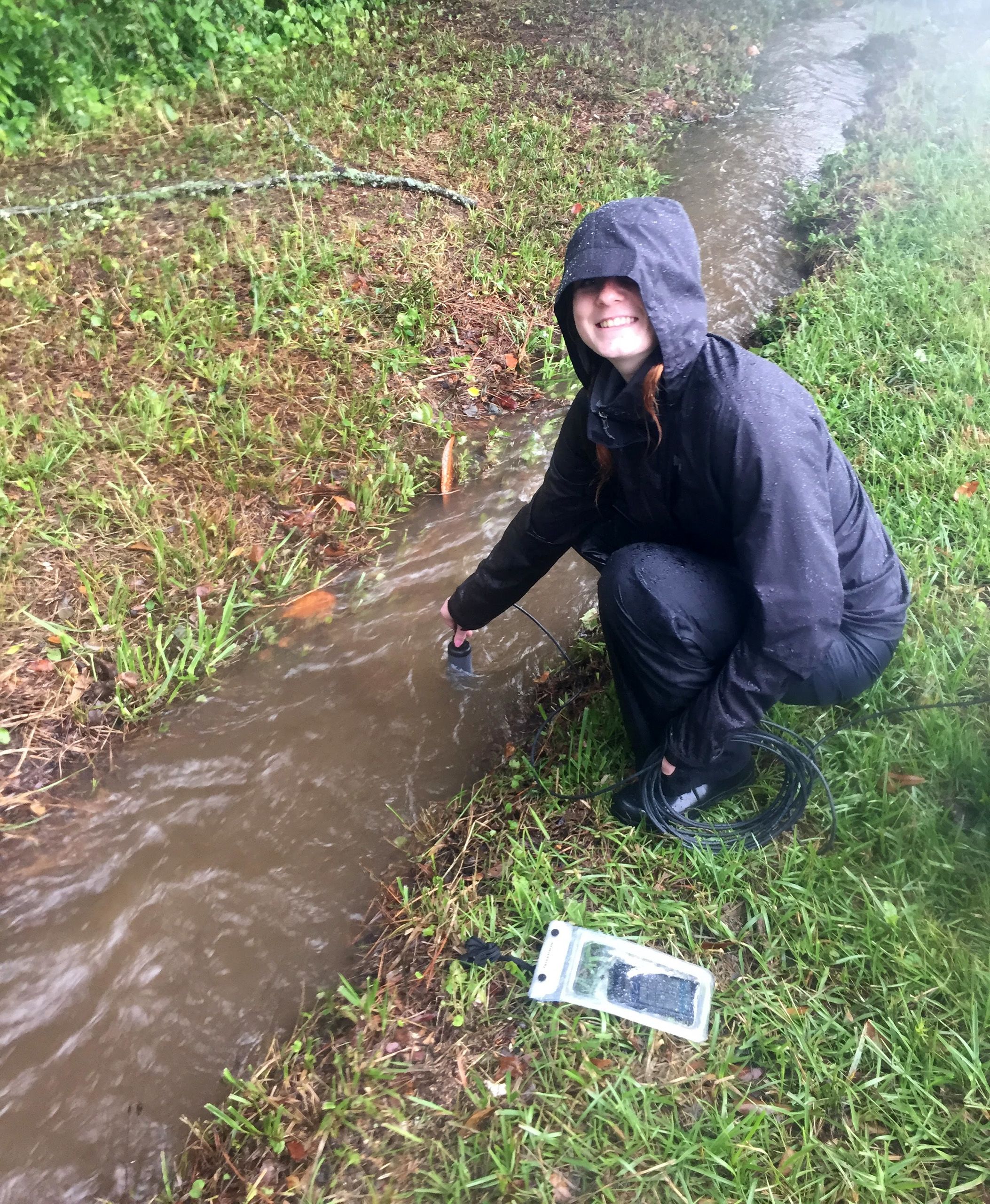

Michael Martin, lecturer in biology, worked with junior Edward Yin from Toronto, Canada. Martin says he enjoys student research for the natural classroom it creates.
“Students learn a great deal addressing the inherent challenges that novel research provides and they never have to ask the question ‘Why am I learning this?’ It’s a real challenge in the traditional classroom to convince every student that their learning is building to something — contributing to some larger goal that may not be evident to them yet. Independent research provides a lesson plan for me and real-world application for my student, all while pursuing our shared interests.”
— Michael Martin, lecturer in biology
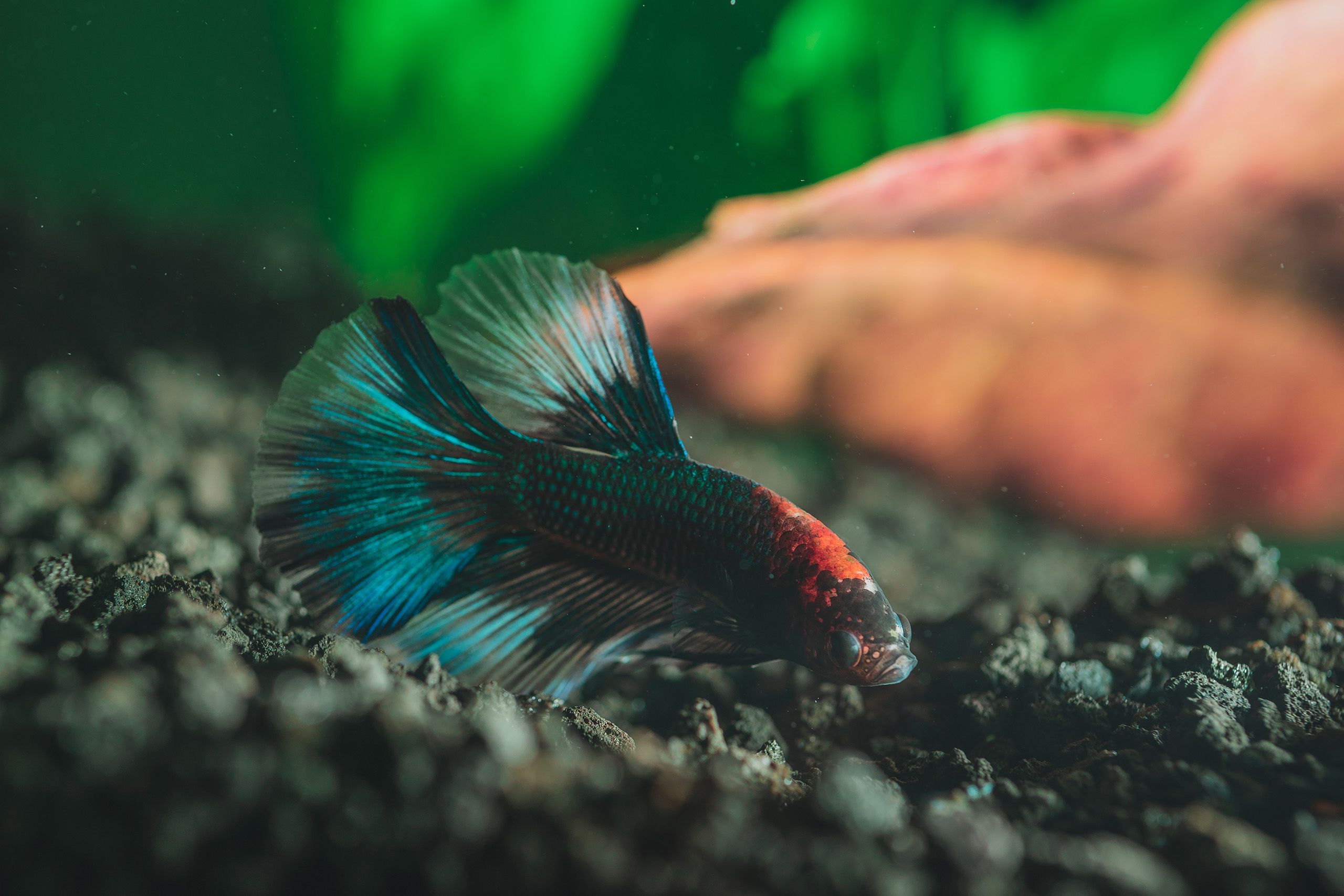
Yin and Martin studied mating behavior in closely related fish species in the genus Betta – famous for aggressive males and very showy captive bred domesticated forms found in any pet store. They wanted to see if males and females generally prefer to spend time near their species if given the choice or with a different, closely related species. And, they wanted to observe if males bias their aggression towards their species.
As a student interested in the natural sciences, Yin had wanted to take part in an independent project.
“Few programs provide as much autonomy and hands-on experience as this at the undergraduate level. As someone who had never been exposed to research beyond the classroom, I thought that SURE-Oxford would be a promising place to start.”
Yin loved seeing his project come to life. He and Martin had already begun looking at their research question two semesters earlier, as part of the Oxford Research Scholars program. They had many technical and logistical hurdles to be overcome.
“Working with living organisms is always tricky,” Yin admits. “While you might have the perfect plan going in, a subject being studied often has a mind of its own. I couldn’t tell you how many times we had to change our approach or setup just because a fish decided to jump out of the tank or hide beneath the heater.”
Learning how to troubleshoot is integral to any research, Yin says.
“This research is eye-opening in that it shows how even something as mundane as your everyday pet may have significant implications for understanding biodiversity,” Yin says.
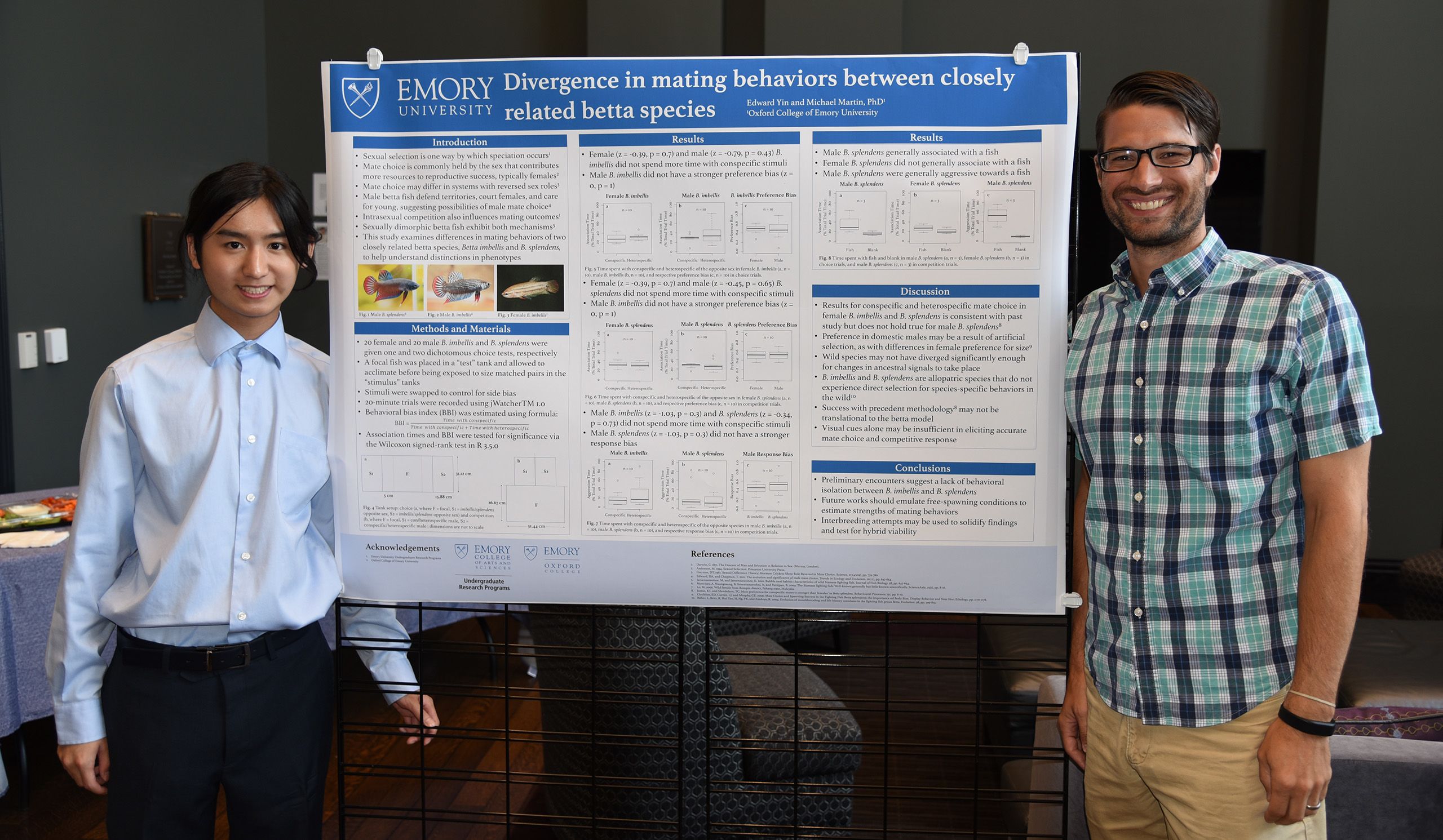
Since 2012 Effrosyni “Frosso” Seitaridou, associate professor of physics, has been the director of the SURE-Oxford program, which started in 2006. Over the years, the program has been funded by the Howard Hughes Medical Institute, the Pierce Program for Leadership and Community Engagement, and Oxford College. In 2019, it was exclusively funded by Oxford.
Organizers plan on expanding SURE-Oxford to include participants from history and social sciences and humanities, in addition to natural sciences and mathematics. With the program’s expansion, it will be part of Oxford’s Experiential Learning program, which focuses on student research, global learning, applied arts, service learning, and internships.
For more information about the SURE-Oxford program, contact Jill Adams at jill.adams@emory.edu or 770-784-4661.
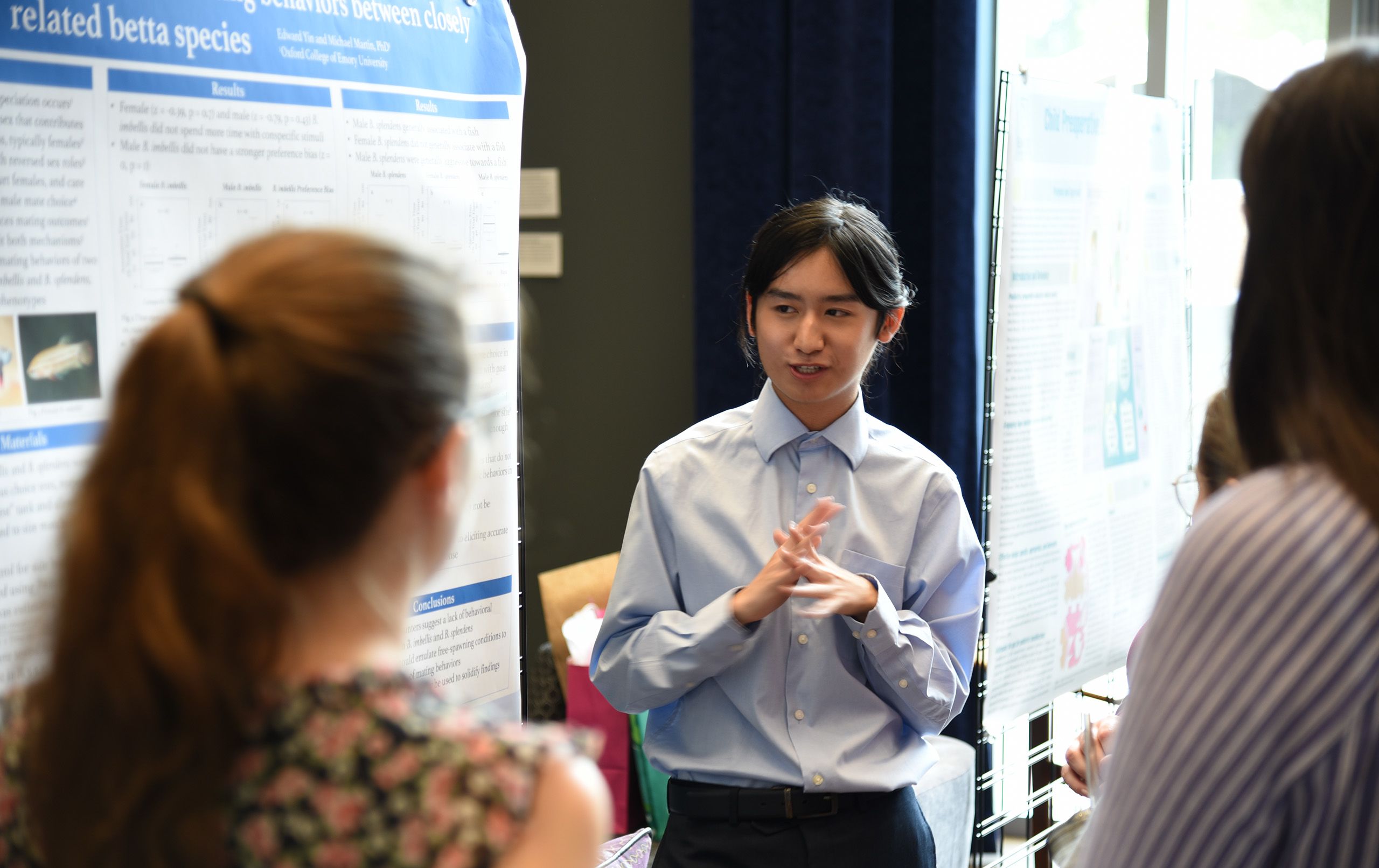

To learn more:
Please visit our student research info.



